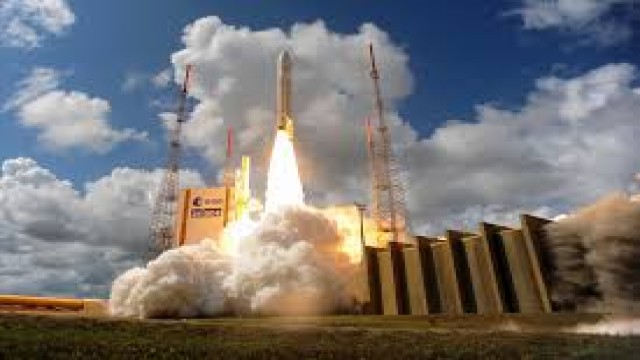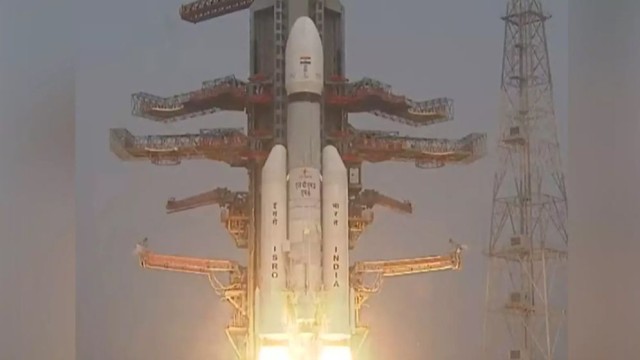"The space agency handled industrial contracts down to the last bolt and was given blank checks during the Cold War, but the current paradigm is banking on the strength of the American market economy to produce breakthroughs at a fraction of the historical expenses."
This week, a private Houston-based corporation will take charge of a journey to the Moon that, if successful, will be the United States' first lunar landing since the Apollo period ended fifty years ago.
Following China, India, and Japan's recent successful landings, Intuitive Machines' Nova-C spaceship is scheduled to fly atop a SpaceX rocket on Wednesday, putting their reputations at risk.
So why provide such jobs to the private sector when another business, Astrobotic, made a similar endeavor and failed only a month ago?
The key to the solution is found in the way NASA reconfigured itself in order to accommodate Artemis, the agency's main Moon-to-Mars mission.
The space agency handled industrial contracts down to the last bolt and was given blank checks during the Cold War, but the current paradigm is banking on the strength of the American market economy to produce breakthroughs at a fraction of the historical expenses.
Although there has been some success with the current strategy, there is a chance that China, the United States' main space competitor, will surpass it in accomplishing important goals like returning the first rocks from Mars and sending a crew to the Moon in the near future.
- The success of SpaceX -
NASA's Commercial Lunar Payload Services (CLPS) project, which focuses on young enterprises, follows the example of SpaceX, which rose quickly from being criticized as risky in its early days to becoming perhaps NASA's preferred contractor.
Former National Space Council member Scott Pace told AFP that NASA purposefully implemented a program that gave "more shots on goal" at lower prices priority.
"The reliability that SpaceX has now is as a result of painfully blowing up multiple rockets along the way," he stated.
Since NASA's space shuttle program ended in 2011 and NASA became dependent on Russia's Soyuz rockets, SpaceX missions are presently the only method humans launch from US territory.
By becoming the first to certify their technology, Elon Musk's startup outperformed the much favored aerospace giant Boeing, demonstrating to experts the need of competition between businesses offering many possibilities.
A government audit estimates that the average cost to NASA of purchasing a ticket on a SpaceX trip is around $55 million, but a research published in the journal Nature claims that each space shuttle launch cost more than $2 billion, adjusted for inflation.
- Moving on to Artemis -
According to an estimate by Casey Dreier of the nonprofit Planetary Society, NASA was awarded more than $300 billion during the Apollo period, which is significantly more than the $93 billion that would be spent on Artemis by 2025.
The government currently acquires services from businesses rather than instructing the private sector on what exactly to create; nonetheless, this often fragmented approach has significant disadvantages.
NASA has partnered with SpaceX to perform the first crewed lunar landing, despite NASA owning the massive Space Launch mechanism (SLS) rocket and the Orion human capsule. The landing mechanism is a novel and untested technology, based on SpaceX's next-generation Starship rocket.
The starship has not yet successfully completed a flight test without exploding, and before it can go to the moon on its own without the assistance of SLS and dock with Orion to retrieve the crew, it must repeatedly refuel while in orbit.
SpaceX's core goal, long-range expeditions to Mars, is something Musk is fervently pursuing. However, if futuristic space fuel depots are implemented correctly, it may take longer for American boots to return to the Moon.
NASA has said that this may happen by 2026 at the latest, although there is a chance that this timescale will be extended. China, on the other hand, has committed to a crewed landing by 2030 and has recently kept its word.
According to G. Scott Hubbard, a former senior NASA official, the Chinese "don't go through all of the shenanigans the US has, which is extreme polarization followed by government shutdown threats, followed by continuing resolutions."
Whether it is a good thing or not, America is stuck in its new public-private paradigm.
According to Dreier, Artemis was purposefully created with a wide range of foreign collaborations, including those with the United Arab Emirates, Canada, Europe, and Japan, to avoid it being abandoned.
Furthermore, there isn't really a viable substitute because the earlier Moon-to-Mars program Constellation, which was planned in the 2000s and operated more like Apollo, was terminated, mostly because of financial difficulties.
End//voice7news.tv































Comment: